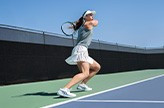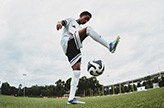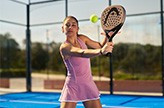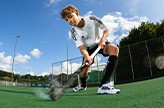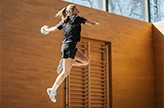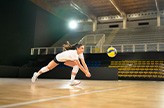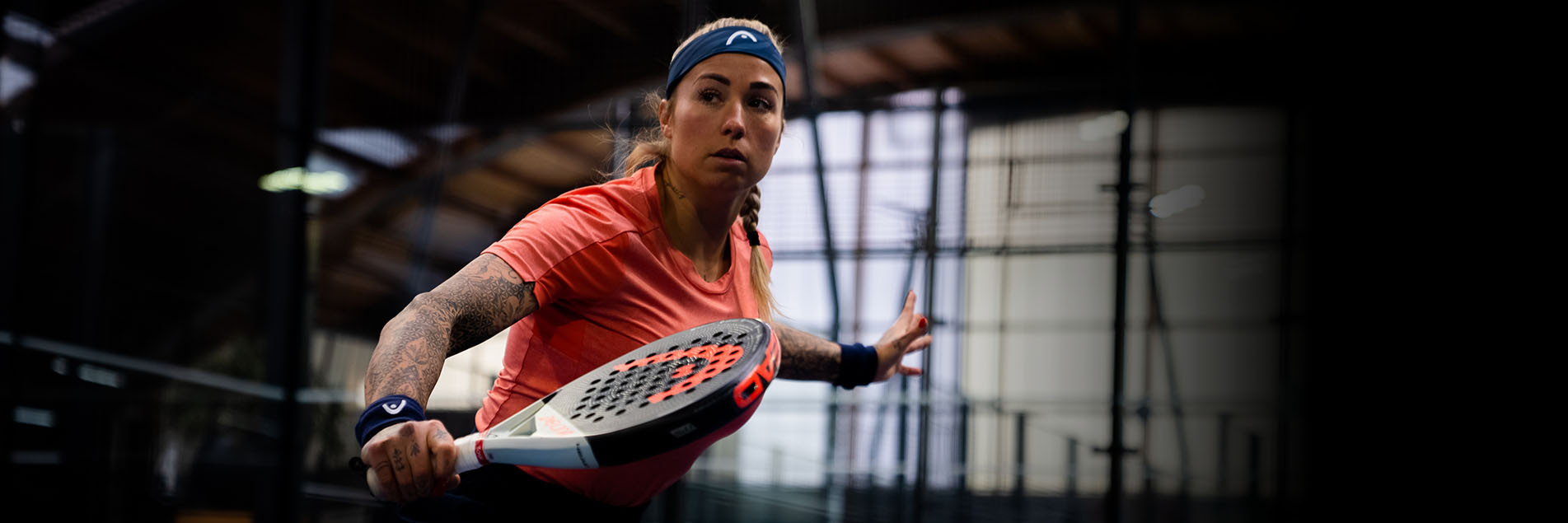Passion for Sports
Worldwide delivery
Call us:+31 416 293012
Help in choosing a padel racket
Am I beginner, intermediate or advanced?
To begin with, it’s important to determine your playing level. We distinguish the following levels:
Junior: Junior rackets are suitable for children up to around 12 years old. The Junior rackets are lighter and made from softer materials. Additionally, these rackets have a smaller and thinner grip.
Beginner/recreational players: Players who are just starting with padel or play occasionally for fun. A padel racket for beginners should be easy to handle, forgiving, and offer great control. These rackets are usually lighter and have a round shape.
Intermediate/experienced players: Players who play padel regularly or are already experienced in other racket sports like tennis. These intermediate players often don't have a specific playing style yet and usually choose a teardrop-shaped racket. The advantage is that you can hit with more power while still maintaining good control.
Advanced/professional players: Players who play frequently and intensively and have fully mastered the technique. These advanced players have developed a specific playing style and therefore know exactly what they are looking for in a racket. Players who prefer control and precision will choose a racket with defensive characteristics (round shape), while players with an aggressive playing style will opt for a racket with offensive characteristics (diamond shape).
What padel racket shapes are there?
An important aspect is the shape of the racket head. We distinguish 4 different shapes. The shape of the padel racket says a lot about the playing style of the racket.
Round
With round-shaped rackets, the balance point is low. As a result, the racket has a large sweet spot (the ideal hitting point), making it quite forgiving if you don’t hit the ball exactly in the right spot. In round rackets, the sweet spot is in the center of the racket. Round rackets are very maneuverable and offer great control. A disadvantage is that the racket provides less power in your shots.
Round rackets are ideal for beginner and recreational players. As an experienced or advanced player, you’ll choose a round shape if you're a defensive player and mainly looking for control.
Round rackets are ideal for beginner and recreational players. As an experienced or advanced player, you’ll choose a round shape if you're a defensive player and mainly looking for control.
Teardrop
With teardrop-shaped rackets, the balance point is slightly higher and the sweet spot is smaller than with a round racket. The sweet spot is also positioned a bit higher on the racket. This means the racket offers an excellent mix of control and power. Teardrop-shaped rackets are a bit more difficult to play with than round-shaped rackets, but easier than diamond-shaped rackets.
Teardrop-shaped rackets are versatile and suitable for various playing styles. This makes them ideal for intermediate/experienced players.
Teardrop-shaped rackets are versatile and suitable for various playing styles. This makes them ideal for intermediate/experienced players.
Diamond
With diamond-shaped rackets, the balance point is towards the top of the racket. The sweet spot is even smaller and located higher than with a teardrop-shaped racket. This makes it harder to hit the ball in the right spot and therefore requires good technique. The racket is less maneuverable but provides ultimate power.
Diamond-shaped rackets are generally suitable for more advanced players with an attacking playing style.
Hybrid
Hybrid rackets have a unique shape and combine the characteristics of different shapes. The hybrid shape is suitable for intermediate or advanced players who are looking for a combination of various features, such as strength and comfort or power and control. Hybrid shapes are hard to classify or sometimes completely new.
What is the difference between the balance points?
The balance point of a padel racket is closely related to the shape of the racket. The balance has a significant impact on the maneuverability of the racket.
Low: With rackets that have a low weight balance, the weight is more towards the grip. This results in a maneuverable racket with a lot of control. These rackets usually have a round shape and are suitable for beginner players or advanced players who want more control.
Medium: The weight is more centered in the racket and is balanced, offering a good mix of control and power. These rackets typically have a teardrop or round shape and are suitable for a wide range of players.
High: With rackets that have a high balance, the weight is closer to the head of the racket. As a result, the racket feels a bit heavier and allows for powerful shots, but it can also increase the risk of injury. These rackets usually have a diamond shape and are mainly suitable for advanced and professional players.
What weight should I choose?
It is recommended to try out several rackets to discover which weight suits you best. A lighter racket is often used by children, women, and beginners. Lightweight rackets are more maneuverable, offer greater control, and reduce the risk of injury. Male players and more advanced players generally opt for a heavier racket, which allows for more power.
Choose the heaviest weight you feel comfortable with, as this will transfer the most power through the racket. In addition to the weight, the weight distribution (balance) also affects how heavy the racket feels. When the balance point is low, the racket feels lighter than when the weight is more towards the top. The general guidelines for racket weight are as follows:
290–340 grams (light): This weight category mainly includes junior padel rackets. There are also extra-light rackets for adults who are just starting padel or are prone to injury.
340–365 grams (medium): Rackets in this weight category are mainly suitable for women, beginner players, or players who are injury-prone.
365–390 grams (heavy): The weight of padel rackets for men typically ranges between 365 and 390 grams. This weight category is not recommended for beginner players or those prone to injury.
What is the thickness of a padel racket?
According to the official regulations, the racket head of padel rackets may not be thicker than 38 mm. Most rackets have a thickness between 36 and 38 mm. Thinner rackets offer more maneuverability and control, while thicker rackets provide more power.
Material of a padel racket
The outer part of a padel racket, including the frame and racket face, is usually made of fiberglass or carbon.
Why carbon?
Carbon is an expensive, lightweight, and durable material. Few rackets are made entirely of carbon due to the high cost. That’s why padel rackets often specify how much carbon is used. You’ll find rackets with 3K carbon, 12K carbon, or 18K carbon. For example, 3K carbon contains three thousand carbon threads in one fiber, and so on. The more carbon threads per fiber, the thicker the carbon layer. The more carbon a racket contains, the longer it will last and the harder it will feel. Rackets with a high carbon content feel heavier and provide a lot of power. These rackets are suitable for advanced players with an attacking playing style.
Why fiberglass?
Fiberglass is cheaper and heavier than carbon. It is also softer and more elastic. However, fiberglass is less strong than carbon, which makes carbon more durable. Rackets made of fiberglass are more budget-friendly. For beginners, a fiberglass racket is recommended because of its elasticity, which reduces impact and makes it easier to place the ball.
Top layer
Many mid-range and top-end padel rackets have a specific texture or coating on the racket face. This makes the surface rough, giving you more grip on the ball. As a result, it becomes easier to apply spin to your shots.
Protective strip
Some rackets come with a built-in protective strip at the top. You can also buy protective tape that you can apply to the top of the frame yourself. This way, your racket lasts longer and is protected from scratches and impacts on the court.
The core of a padel racket
The core must effectively absorb shocks and withstand the high impact of hitting the ball. It also needs to endure varying weather conditions like rain and temperature changes. The core is usually made of foam or EVA rubber. A third type of core combines both materials (hybrid core).
Foam: Foam is highly elastic, allowing the ball to bounce off the racket more easily. This means you need less power for defensive shots and gain more control. The material is soft and comfortable but provides less power for offensive shots.
EVA: EVA rubber is harder and less flexible. It is more difficult to play with, especially in colder temperatures. However, it is more durable and provides greater power for offensive strokes. Within EVA rubber, different compositions vary in hardness.
Hybrid: Hybrid cores use both foam and EVA to combine the benefits of both materials. Many modern rackets feature this combination. A hybrid core is a soft rubber made of foam surrounded by outer EVA rubber. There are many types of foam and blends, which ultimately determine the racket’s hardness. The harder the racket, the more power it delivers; the softer the racket, the more control it offers.
Which padel racket suits me?
Finally, your playing style also plays a role in choosing the best racket for you. We distinguish between 3 different playing styles:
Defensive: Defensive players need a racket that offers a lot of control. These are rackets with a round shape, lower balance, and lower weight. Beginners are best off starting with a racket suited to a defensive playing style. There are also advanced players with a defensive style who choose a racket that matches this approach.
Offensive: Offensive players need a racket that provides a lot of power. These players have a more aggressive playing style, often approaching the net and aiming for smashes. These rackets are mainly suitable for experienced and advanced players, as they require good technique. These are diamond-shaped or teardrop-shaped rackets with a higher balance, heavier weight, and harder materials.
All-round: Do you have an all-round playing style and want to combine power and control? Then a teardrop-shaped racket is the best fit for you. The weight and material depend on your skill level. These rackets are mainly suitable for intermediate players.
Grip size of a padel racket
A padel racket does not come in different grip sizes. You can make the grip thicker yourself by applying one or more overgrips. How do you know if your grip is thick enough? When you hold the racket in your hand, your pinky finger should fit in the space between your fingers and the palm of your hand. If there is more space, the grip is too thick; if there is too little space, the grip is too thin.
If you use an overgrip, it is recommended to replace it regularly. If your hands sweat a lot, your grip will deteriorate quickly, and you’ll lose control. It is also possible to replace the base grip with a special base grip with texture. This provides maximum grip and extra comfort.
